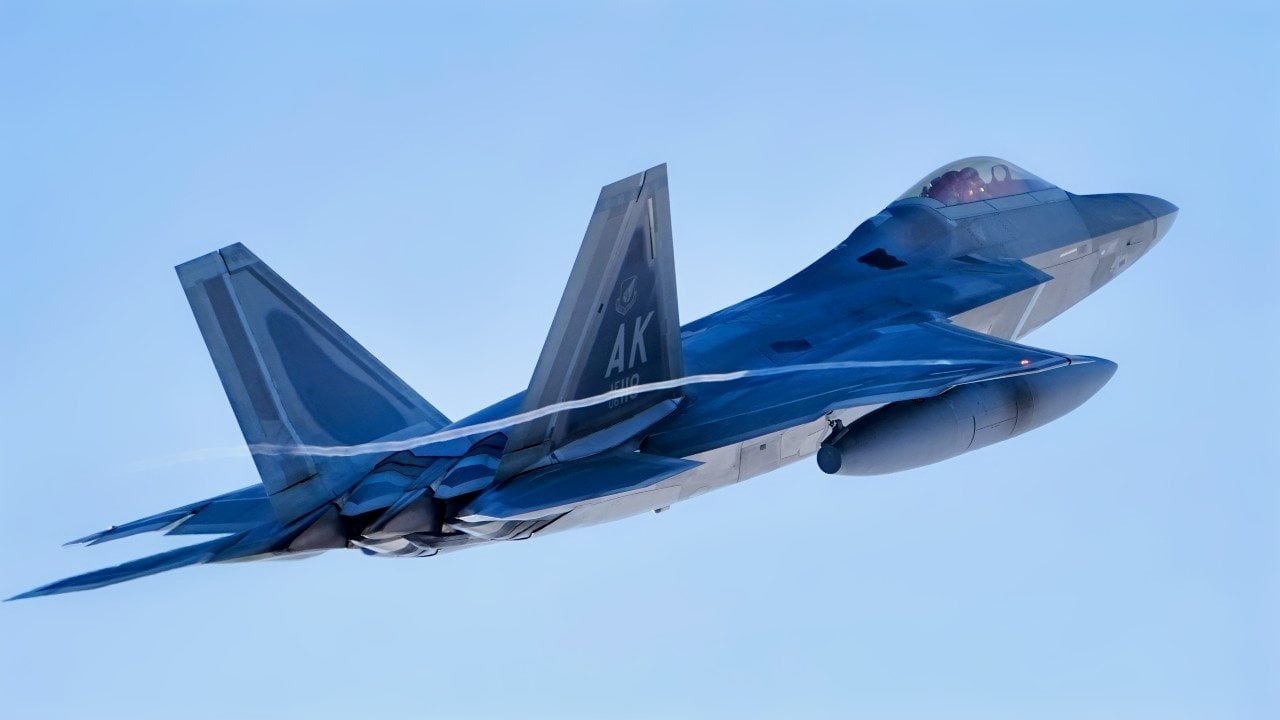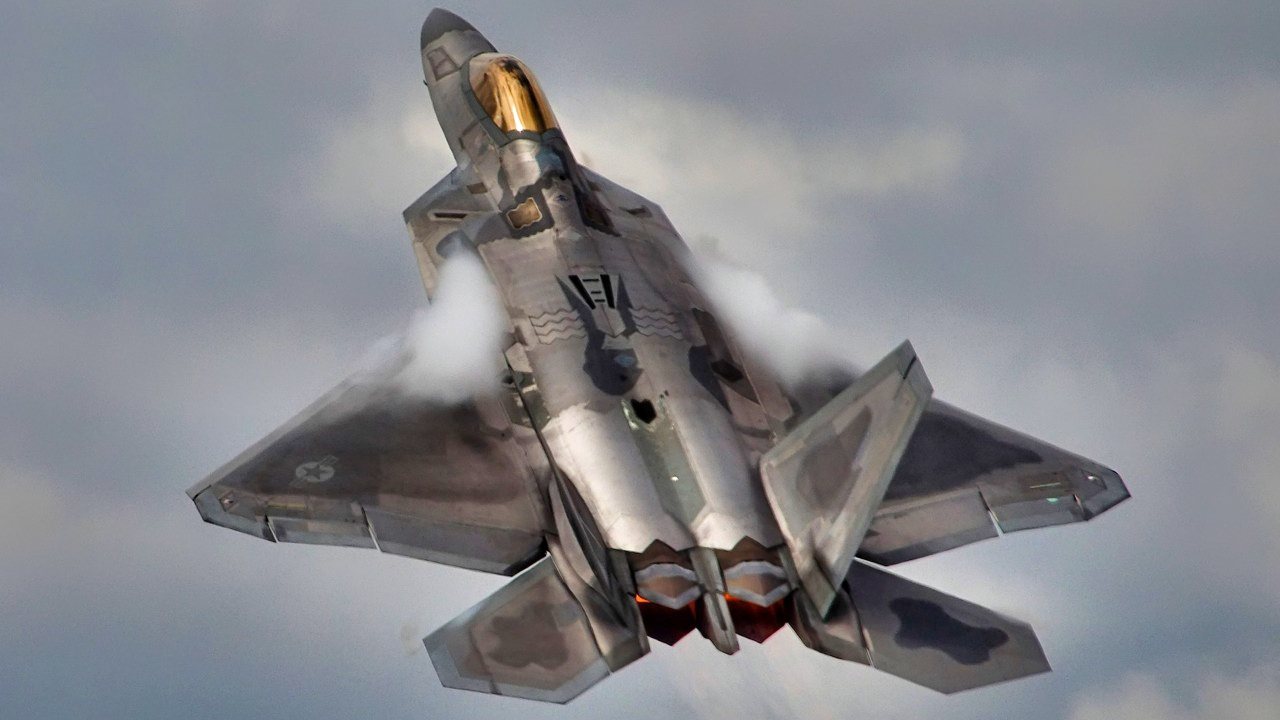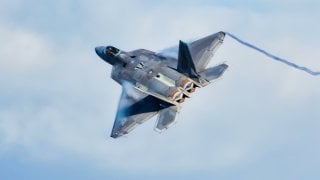Wanna Retire 30 'Old' F-22 Raptors to Build NGAD Fighters? Let the Drama Begin
A recent Government Accountability Office (GAO) report criticized the U.S. Air Force for not providing sufficient information to lawmakers regarding the retirement of its older Block 20 variants of the Lockheed Martin F-22 Raptor.
Summary and Key Points: A recent Government Accountability Office (GAO) report criticized the U.S. Air Force for not providing sufficient information to lawmakers regarding the retirement of its older Block 20 variants of the Lockheed Martin F-22 Raptor.

-The Block 20 aircraft, used for training and not combat, are proposed for grounding to free up funds for the Next Generation Air Dominance (NGAD) program.
-The GAO emphasized the need for detailed data on training, mission capability, and cost implications of retiring versus upgrading these aircraft. Congress, constrained by insufficient data, faces challenges in making well-informed decisions, leading to legislative restrictions on reducing the Raptor fleet until FY2028.
GAO Criticizes Air Force for Lack of Transparency on F-22 Retirements
A government watchdog warned that U.S. lawmakers weren't provided enough information regarding the United States Air Force's decision to retire its older Block 20 variants of the Lockheed Martin F-22 Raptor. The Air Force has called for grounding the fighters, which would free up funds to develop other programs – notably the Next Generation Air Dominance (NGAD) system of systems that include a manned fighter and supporting drones that could serve as "loyal wingmen."
In its June 2024 report, the Government Accountability Office (GAO) noted that the F-22 Block 20 are not actually combat-capable aircraft and are instead used in training. Those aircraft have not been updated to the same capabilities as the more advanced Block 30/35 aircraft now in service.
According to Airforce-Technology.com, the air service currently operates 32 of the Block 20 Raptors, along with 150 Block 30/35 models.
"In its proposal to Congress, the Air Force didn't note key details such as how to train without Block 20s or whether they should be upgraded instead of retired. Congress didn't have enough data to make a decisionas was the case with a similar Air Force proposal we reported on in 2016," the GAO noted.
The watchdog further recommended that "the Air Force collect data to inform its proposals," and that lawmakers be provided with the information on key factors, including "training, mission capability, and testing, to inform that decision."
One point that the GAO further said needs to be addressed is how the Air Force could conduct F-22 training and/or testing if the Block 20 aircraft are retired, as the service failed to document any expected challenges that combat units could face "if mission-ready Block 30/35 aircraft are used for training or testing instead of the Block 20s."

Moreover, Air Force officials have suggested that retiring the aging Block 20 Raptors would result in cost savings.
"These savings, however, did not account for other costs, such as maintenance for increased operations to make up for less aircraft," the GAO report highlighted.
What's a Few More Billions for F-22 Raptor Fighters?
The F-22 Raptor program has been noted for being one of the Air Force's most expensive projects. The service had originally planned to buy a total of 750 of the fifth-generation air superiority fighters, but the program was scaled down to 381 aircraft and then was cut to 195 – including 8 test and 187 production warplanes.
The National Interest previously reported the total F-22 program cost more than $67 billion, putting the price tag for aircraft at around $350 million. While already an astronomical cost, the GAO study found that the 30 aircraft could be upgraded for a fraction of the billions spent.
The watchdog accused the Air Force of not being entirely forthcoming with the costs of upgrading as opposed to divesting the test aircraft.

"The Air Force collected notional estimates from the F-22 prime contractor for upgrading Block 20s to the fleet's more modernized Block 30/35 level. The contractor estimated upgrades would cost at least $3.3 billion and take approximately 15 years to complete but did not provide supporting data. The Air Force determined this information was sufficient for its purposes. Without better evidence about the potential effects of either divesting or upgrading F-22 Block 20 aircraft, Congress may be impeded from making a well-informed decision on the merits of the Air Force's proposal," the GAO explained.
Due to the repeated calls by the Air Force to retire the F-22, lawmakers introduced a prohibition on reductions to the Raptor fleet in the National Defense Authorization Act (NDAA) FY2023. As a result, U.S. federal law now prohibits the Air Force from divesting any F-22 Raptors until FY2028. It would seem that neither side is willing to budge, but the GAO has made the case that lawmakers haven't actually been provided the whole picture.
Author Experience and Expertise: Peter Suciu
Peter Suciu is a Michigan-based writer. He has contributed to more than four dozen magazines, newspapers, and websites with over 3,200 published pieces over a twenty-year career in journalism. He regularly writes about military hardware, firearms history, cybersecurity, politics, and international affairs. Peter is also a Contributing Writer for Forbes and Clearance Jobs. You can follow him on Twitter: @PeterSuciu. You can email the author: [email protected].
Image Credit: Creative Commons.


